Posts Tagged ‘Retail’
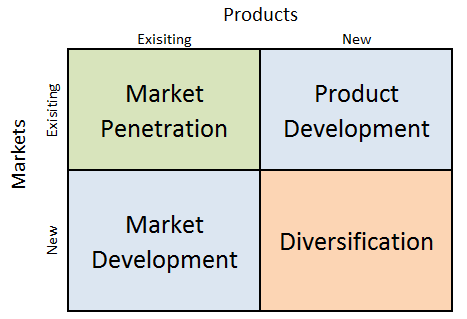
IKEA Ansoff Matrix is a marketing planning model that helps the Swedish furniture chain to determine its product and market strategy. According to Ansoff Matrix, there are four different strategy options available for businesses. These consist of market penetration, product development, market development and diversification. IKEA Ansoff Growth Matrix Within the scope of Ansoff Matrix, IKEA uses all four growth strategies in an integrated manner: 1. Market penetration. Market penetration implies selling existing products to existing markets. IKEA uses market penetration strategy aggressively. Effective marketing strategy plays an important role in increasing the efficiency of market penetration for the furniture retailer. Traditionally the world’s largest furniture retailer had relied on its famous catalogue printed in large quantities as a time-tested instrument to pursue market penetration strategy. However, in 2020 the company announced that it will stop producing catalogues starting from 2022 due to the decline of demand. 2. Product development. This involves developing new products to sell to existing markets. Product development is one of the main growth strategies for IKEA. The home improvement and furnishing chain has more than 12000 types of products in its range and it launches about 2000 new products every year.[1] The company makes some of its products in-house, as well as, purchases from suppliers. 3. Market development. Market development strategy is associated with finding new markets for existing products. The world’s largest furniture retailer engages in market development extensively. IKEA has 11 franchisees operating in more than 500 locations in 63 countries.[2] The company is forecasted to enter into more developing markets in short and medium term perspective. 4. Diversification. Diversification involves developing new products to sell to new markets and this is considered to be the riskiest strategy. IKEA experiments with diversification business strategy occasionally. IKEA restaurants within furniture retail shops can…
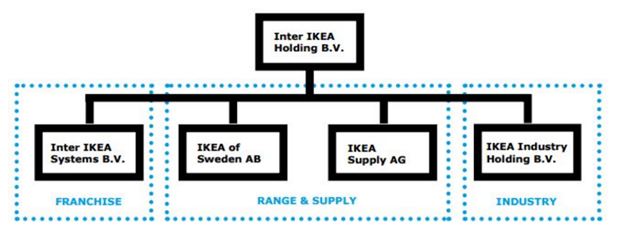
IKEA has a unique organizational structure. Specifically, “around the globe, a large number of companies operate under the IKEA trademarks. All IKEA franchisees are independent of Inter IKEA Group. A large group of franchisees are owned and operated by INGKA Group. Inter IKEA Group and INGKA Group have the same founder, and a common history and heritage, but have operated under different owners and management since the 1980s”[1] Figure 1 below illustrates the essence of IKEA organizational structure: Figure 1 IKEA organizational structure Inter IKEA Group integrates of a group of companies. The group sets strategic direction for the whole business and connects all IKEA franchisee. The group is formed of three core businesses as illustrated in Figure 1 above: 1. Inter IKEA Systems B.V. is the furniture retailer’s franchisor worldwide. This unit also deals with franchise agreements with 11 franchisees that operate in more than 500 locations.[2] 2. IKEA Range & Supply develops and supplies products for the home improvement and furnishing chain. 3. IKEA Industry produces home furnishing products and it manufactures about 10-12% of the total range. The present organizational structure of IKEA illustrated in Figure 1 above is the outcome of a major restructuring initiative that was introduced in 2016. To improve the franchise system and clarify roles, IKEA range, supply and production activities were transferred to the new Inter IKEA Group headed by Inter IKEA Holding B.V. Currently, Jon Abrahamsson Ring is the CEO of Inter IKEA Holding B.V. The Figure 2 below illustrates the overview of the franchise system. Figure 2 Overview of the IKEA franchise system[3] Specifically, IKEA Group sold key subsidiaries for EUR 5.2 billion to increase the flexibility of the business to be able to adapt to changes in the external global marketplace. IKEA management considers this change to be much…
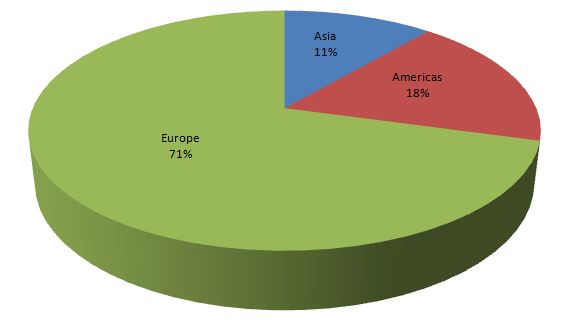
SWOT is an acronym for strengths, weaknesses, opportunities and threats related to organizations. SWOT analysis is a strategic tool that helps businesses to analyse internal and external factors affecting the bottom line. Strengths and weaknesses are internal factors that can be influenced by the company. Opportunities and threats, on the other hand, are external factors that have to be taken into account in strategic decision-making by the senior management. The following table illustrates IKEA SWOT analysis: Strengths 1. Market leadership in the global scale 2. Democratic design concept 3. Competency in cost-cutting through product and process innovation 4. Brand value and solid financial position 5. Vast, yet focused product range Weaknesses 1. Weak presence in Asia 2. Damaged reputation due to a series of incidents 3. Competitive advantage difficult to sustain 4. Lack of differentiation of IKEA products and services 5. Lack of flexibility due to large size Opportunities 1. Increasing emphasis on CSR 2. Increasing presence in developing countries 3. Adding premium range of products into portfolio 4. Strengthening cost leadership competitive advantage through technological innovation 5. Benefiting from increasing digitalization of various business processes Threats 1. Decline in demand due to increase in consumer income 2. Unsustainability of ‘democratic design’ concept 3. Emergence of competition from Asia 4. Increasing costs of raw materials 5. Global economic and financial crisis SWOT Analysis summary for IKEA Strengths in IKEA SWOT Analysis 1. IKEA is an undisputed market leader in the global market of home improvement and furnishing. The Swedish furniture chain has 11 franchisees operating in more than 500 locations in 63 countries.[1] Additionally, the furniture retailer has 22 Pick-up and Order…

The current IKEA leadership practices and patterns are based on leadership principles and life philosophy of its founder Ingvar Kamprad. Known to practice transformational and charismatic leadership styles, Ingvar Kamprad had been a driving force for many decades behind the phenomenal success of the home improvement and furnishing chain. Ingvar Kamprad founded the furniture retailer in 1943 and after leading the business for 70 years, he handed over control to his three sons. Nevertheless, work principles of the founder associated with frugality and effectiveness continues to serve as a basis for IKEA leadership practices in modern days. In 2017 Jesper Brodin became President and CEO of IKEA Group, INGKA Holding B.V. and its controlled entities. He is only the 6th CEO in The Swedish furniture chain’s history of more than 75 years. Mr. Brodin has worked as an assistant to founder Ingvar Kamprad and it is widely believed that IKEA CEO will not change the strategic direction set by the founder of the business. The CEO of Inter Ikea that manages company’s brand and concept Mr. Jon Abrahamsson Ring has also served as founder’s assistant for many years. It has been noted that “former assistants of Mr. Kamprad have had a near monopoly on the leadership of the two main companies in the furniture empire in recent times”[1]. Apart from two executives mentioned above, former Ingka CEOs Peter Agnefjall and Anders Dahlvig were also former assistant to Mr. Kamprad. IKEA leadership principles are based on the following pillars: 1. Leading by example. It is difficult to contain IKEA leadership style into a single classification due to a unique nature of the business in more than one ways. Perhaps, leading by example, may the most closely characterise leadership practices at IKEA. The famous quote by IKEA founder Ingvar Kamprad…
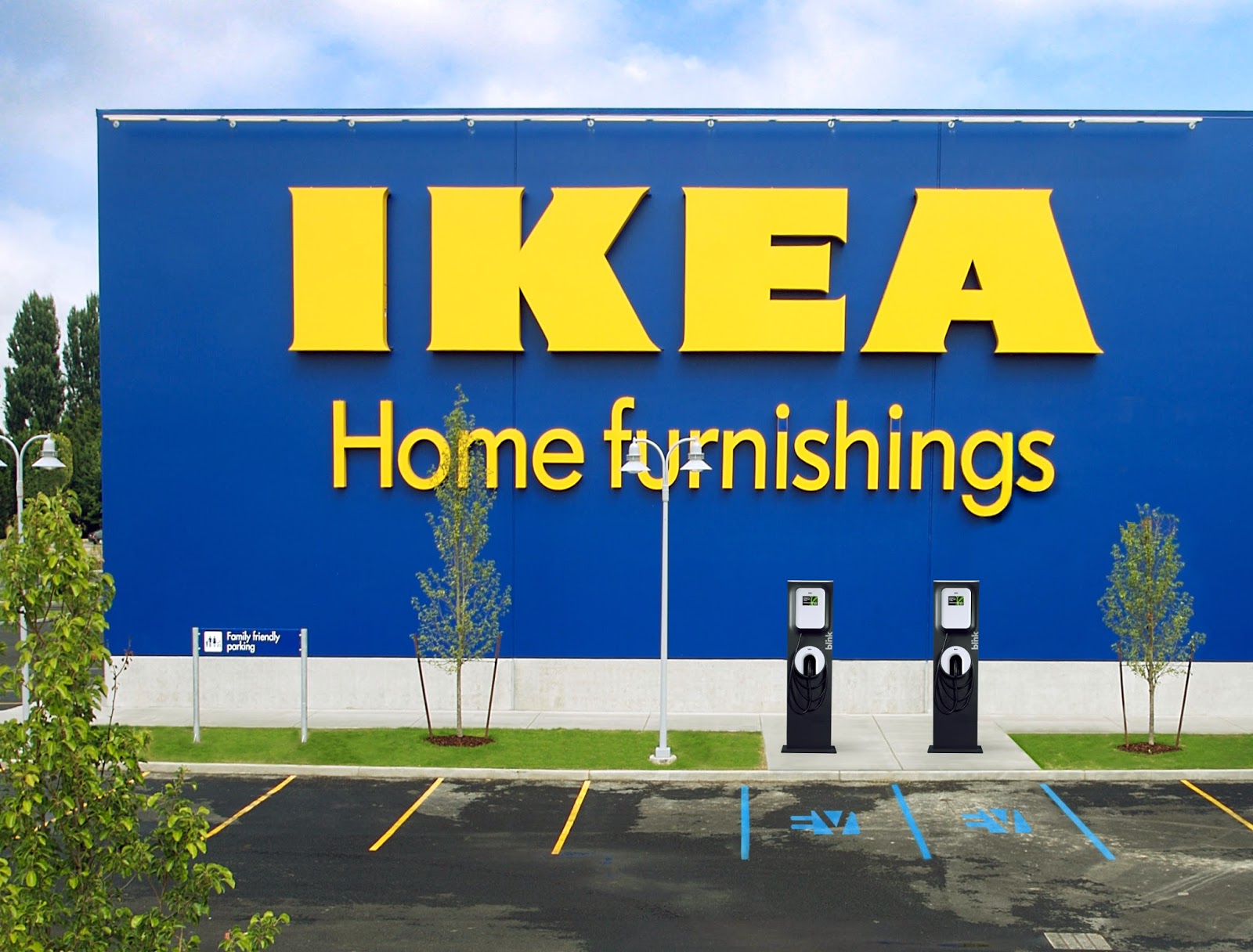
IKEA business strategy is built upon the IKEA concept. The IKEA Concept starts with the idea of providing a range of home furnishing products that are affordable to the many people, not just the few. It is achieved by combining function, quality, design and value – always with sustainability in mind. The IKEA Concept exists in every part of the company, from design, sourcing, packing and distributing through to business model.[1] The following points constitute integral elements of IKEA business strategy. 1. Offering the lowest prices. Cost effectiveness is one of the solid bases of IKEA competitive advantage. The global furniture retailer is able to offer low prices thanks to a combination of economies of scale and technological integration into various business processes. 2. Increasing variety of products. Great range of products also belongs to the list of IKEA competitive advantages. There are 12000 products across in IKEA portfolio and the company renews its product range launching approximately 2000 new products every year.[2] The company is also increasing its presence in food and catering industries. 3. International market expansion strategy. The home improvement and furnishing chain has traditionally engaged in new market development in an aggressive manner. IKEA has11 franchisees operating in more than 500 locations in 63 countries.[3] Furthermore, The Swedish furniture chain has long-term plans to establish its firm presence in many developing countries. 4. Benefiting from strategic alliances. The global furniture retailer benefits from strategic alliances to a maximum extent. The formation of strategic alliances is placed at the core of IKEA business strategy. The list of the most successful collaborations include partnership with Apple to explore the possibilities of Augmented Realityas a tool for home-furnishing, partnership with LEGO for new product development and partnership with Adidas in knowledge sharing about customer behaviour. Experience and competency…
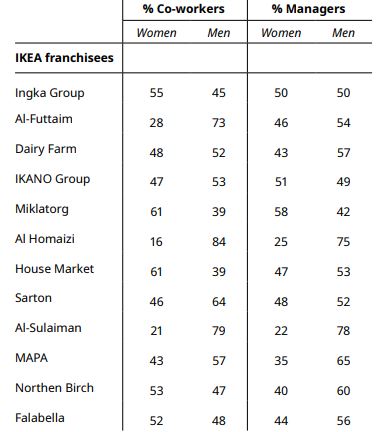
IKEA organizational culture plays an important role in maintaining cost-effective business operations to sustain cost leadership business strategy for the furniture giant. In other words, due to its cost leadership business strategy, IKEA does not offer the most competitive financial compensation to its workforce. Instead, the home improvement and furnishing chain attracts employees with intangible benefits that are deeply integrated within IKEA corporate culture. IKEA organizational culture is based on the following principles: 1. Simplicity and high level of informality. It has been noted that “humbleness in approaching tasks and simplicity in the way of doing things are cornerstones of the IKEA culture”.[1] For example, in IKEA US only a few executives have business cards and “everyone is on a first-name basis and sits side by side at IKEA desks and if you have an ego that needs stroking, IKEA is not the workplace for you.”[2] 2. The value for teamwork. Executives who prefer to manage as one-man show do not fit into IKEA organizational culture. The Swedish furniture chain wants to ensure that it employs only individuals who share its values and appreciate its culture. For this reason, individuals wishing to join IKEA are offered to take an online test which poses a series of 10 work-based scenarios with a choice of actions. The outcome of the test advises applicants if they are likely to ‘fit’ into IKEA organizational culture. 3. Embracing diversity among employees and different ways of doing things. Diversity among the workforce in terms of gender, race, age, ethnicity and sexual orientation is an important element of IKEA corporate culture. As illustrated in table below, there is an adequate level of women representation among across franchisees in floor level workers, as well as, management. IKEA employee gender diversity in FY21[3] Furthermore, the furniture retailer supports…
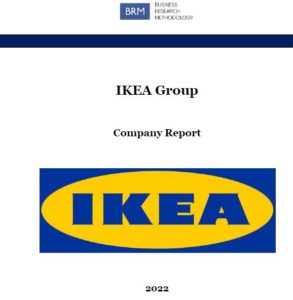
IKEA Group owned by Stichting INGKA Foundation is the largest furniture and home appliances manufacturer and retailer in the world. Founded almost eight decades ago in Småland, southern Sweden by Ingvar Kamprad, today IKEA Group has 11 franchisees operating in more than 500 locations in 63 countries (Annual Report, FY21). By the end of FY21 IKEA employed 225000 people worldwide, an increase of 8000 people compared to the previous year. The world’s largest furniture retailer offers nearly 12000 products and develops approximately 2000 new products each year. In FY21 the company generated total operated income of EUR 25.6 billion, an increase of 8.5% compared to the previous year. Net profit for the year amounted to EUR 1.4 billion (Annual Report, FY21). IKEA’s vision is “to create a better everyday life for the many people” and the company follows an extreme cost leadership business strategy along with new product development strategy to realize this vision. International market expansion strategy also represents an important element of IKEA business strategy. Leadership style exercised to manage the home improvement and furnishing chain can be branded as leading by example, as set by the late founder of the business Ingvar Kamprad. Furthermore, the company has integrated the principles of frugality and intangible employee motivation into its leadership practices. The Swedish furniture chain has devised a unique and complicated organizational structure designed to pay minimum taxes. IKEA possesses a number of noteworthy strengths such as market leadership, ownership and efficient application of democratic design concept and solid financial position of the business. At the same time, the global furniture retailer has serious weaknesses as well. These include weak presence in Asia, difficulty to sustain the competitive advantage and the lack of flexibility of the business due to its large size. IKEA Group Report contains the application…
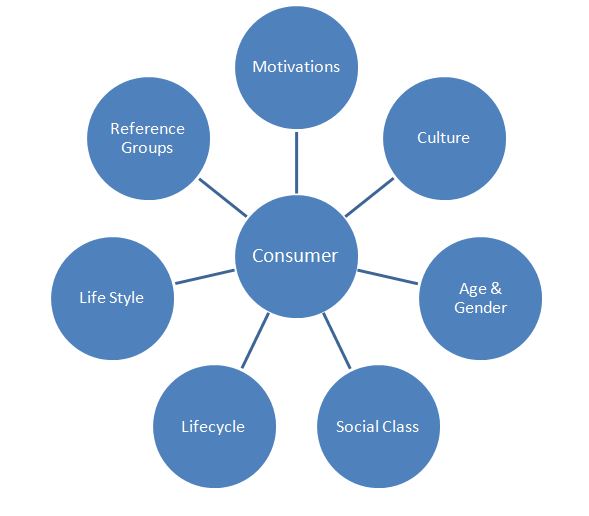
Generally, factors impacting consumer behaviour include motivations, culture, age and gender, social class, lifecycle, life style, and reference groups etc (Arnould et al., 2002, Agwaral, 2006, Hudson, 2008). Full range of factors impacting consumer behaviour can be divided into psychological, situational, and social categories and each of these categories is discussed in more detail further below. Figure 1. Factors Impacting Consumer Behaviour Psychological and Personal Factors Impacting Consumer Behaviour Psychological factors impacting consumer behaviour include lifestyle, interests, occasions for the use of products and services, benefits sought for the use of products and services etc (Batra and Kazmi, 2008). Personal factors affecting consumer behaviour is related to psychological factors and they include attitudes, motivations, perceptions, occupation ect. Lifestyle is one of the most important consumer variables and an important base for customer segmentation (Majumdar, 2010). Therefore, lifestyle analysis is perceived as one of the critical components of marketing research initiatives. Values and lifestyle systems (VALS) represent framework that divide population into different categories according to psychological factors that are found to be correlated with their purchase behaviour (Assael, 2004). An initial VALS or VALS1 specified eight separate psychographic groups: innovators, survivors, thinkers, makers, achievers, strivers, believers and experiencers. According to VALS framework belonging to each group is associated with specific psychological profile and certain lifestyle. According to Hudson (2008) VALS represents a valuable framework in practical level, because businesses can develop products and services that targets unique needs of individual groups within the framework. However, VALS has been criticised on the grounds of being too abstract and too general and this criticism has caused the development of VALS2 that “classifies people into segments based on whether they control abundant or minimal resources” (Arnould et al., 2002, p.126) Figure 2. VALS2 Figure adapted from Arnould et al. (2002) According to VALS2…
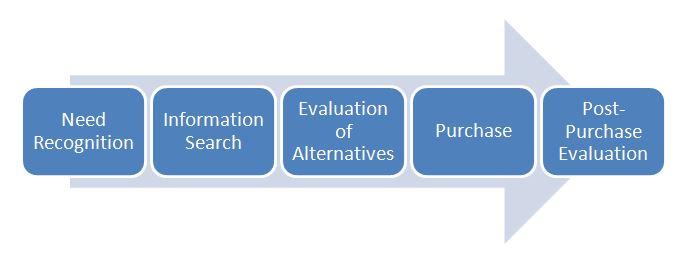
The consumer decision making process is complex and involves all the stages from problem recognition to post purchase activities. It has been noted that “the childhood and the human’s development has a crucial impact on personal decision making process” (Sokolowski, 2011, p.1) and the framework of consumer decision making process is found to be addressed by the majority of authors who have addressed the topic of consumer behaviour. All the consumers have their own needs in their daily lives and these needs make them make different decisions. These decisions can be complex depending on the consumer’s opinion about a particular product, evaluating and comparing, selecting and purchasing among the different types of product. Therefore, understanding and realizing the core issue of the process of consumer decision making and utilize the theories in practice is becoming a common view point by many companies and people. There is a common consensus among many researchers and academics that consumer purchasing theory involves a number of different stages. Depending on the different factors and findings, numerous researchers and academics developed their own theories and models over the past years. However, according to Tyagi and Kumar (2004), although these theories vary slightly from each other, they all lead to almost the same theory about the consumer purchasing theory which states that it involves the stages of search and purchase of product or service and the process of evaluation the product or service in the post-purchase product. Five Stage Model initially proposed by Cox et al. (1983) is considered to be one of the most common models of consumer decision making process and it involves five various stages. These stages are: recognition of need or problem, information search, comparing the alternatives, purchase and post-purchase evaluation. This simple model clearly illustrates and explains how the consumers make…
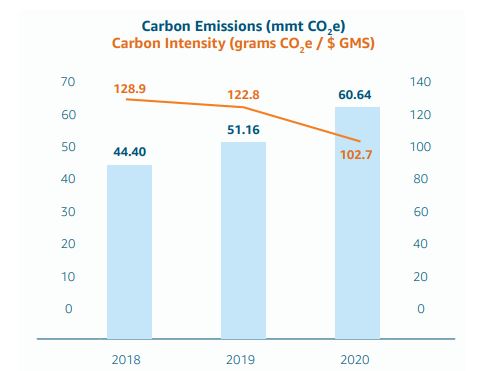
Since Amazon went public in 1997, the e-commerce giant has been repeatedly criticized for its lack of commitment on corporate social responsibility aspect of the business. Moreover, Amazon’s first sustainability executive Kara Hartnett Hurst was appointed only in August 2014 , a stark proof that CSR aspect of the business has not been paid due attention to for a long period of time. CSR Programs and Initiatives Amazon Supporting Local Communities In 2020, the e-commerce giant created the Amazon Relief Fund, with a USD25 million initial contribution, focused on supporting its independent delivery service partners and other stakeholders to deal with the negative impact of coronavirus developments on the business. Amazon’s Device Donation Program facilitates the donation of electronic devices and gift cards to schools located near Amazon fulfilment centres throughout the US The company hosts ‘Girls Who Code’ events occasionally to help get more girls interested in coding The e-commerce giant supports local and national nonprofits with cash and product donations. Amazon Educating and Empowering Workers Amazon Career Choice Program pre-pays 95% of tuition for employees to take courses for in-demand fields, such as airplane mechanic or nursing, regardless of whether the skills are relevant to a career at Amazon. Up to date the program has been attended by more than 10000 employees worldwide. Amazon Virtual Contact Centre, allows Amazon’s customer service employees to work from home. The program “Pay to Quit” offers USD 5000 to warehouse workers who quit to encourage employees to take a moment and think about what they really want.[1] Upskilling 2025 is USD 1,2 billion investment project to provide free skills training to U.S. employees. Employee Health and Safety at Amazon Amazon employs 6200 safety professionals worldwide In 2020 due to the risk of COVID-19 coronavirus, the company recommended all of global…
